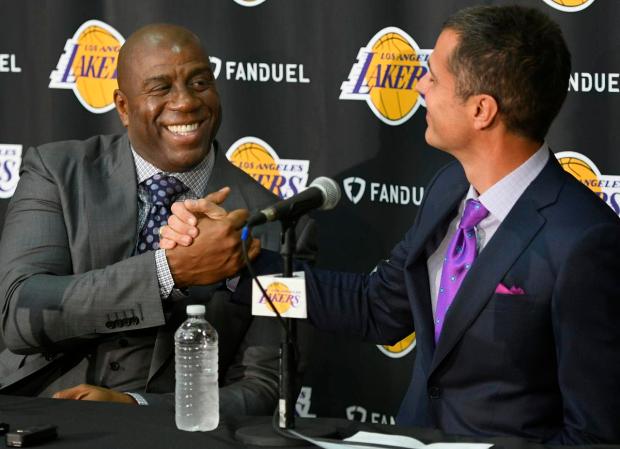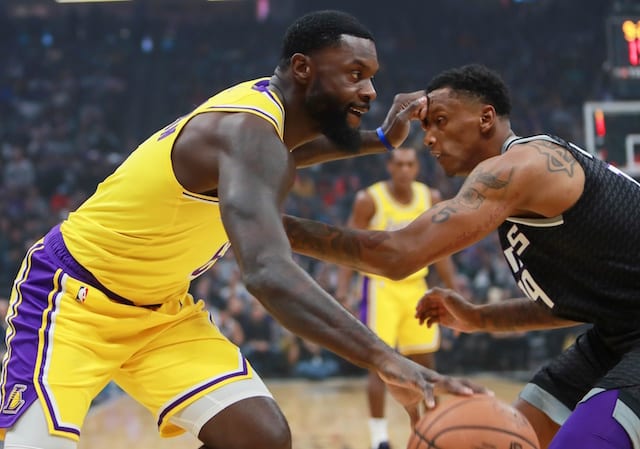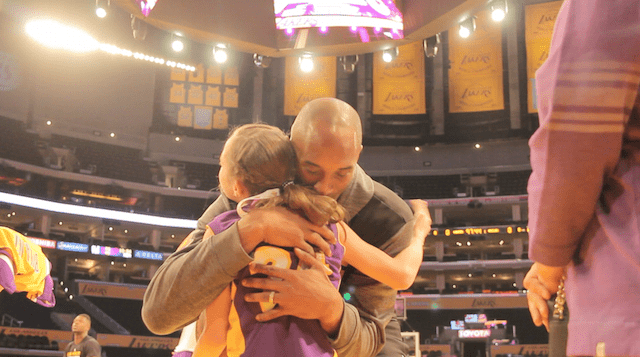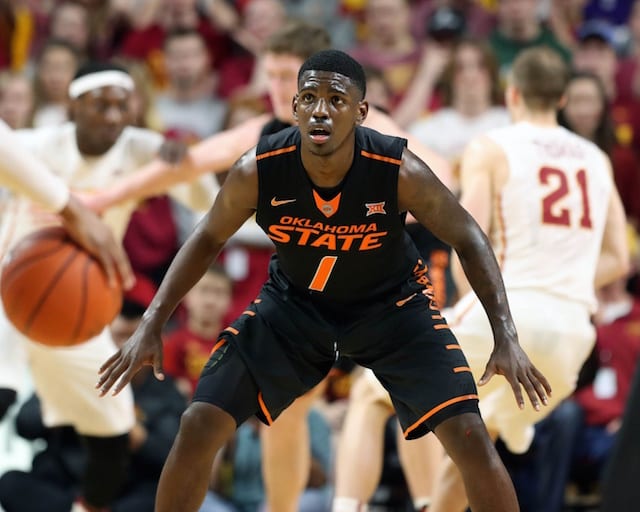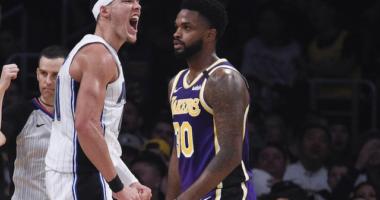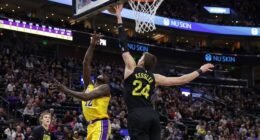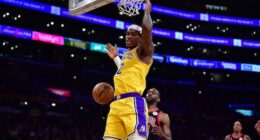The Los Angeles Lakers are back. It has only been a year and a half since Magic Johnson and Rob Pelinka took over the basketball operations department, but the results have been impressive — and desperately needed.
It’s been a long journey, after all, since the timeline skewed and took us into this bizarre reality that we’ve lived in for nearly seven years, where the once-mighty Lakers were left out in the cold.
The fall from grace began on Dec. 8, 2011, with the NBA set to open for business after a lockout cost them the beginning of the season. Determined to make a splash, the Lakers negotiated a trade with the New Orleans Hornets for Chris Paul in a deal that also included the Houston Rockets.
It was done, and then it wasn’t.
Then-commissioner David Stern vetoed the trade, infamously giving the non-answer of “basketball reasons” as his justification, then followed that up by sending Paul to the Clippers instead.
From the outside, it appeared that the CBA negotiations, in which owners complained of a lack of competitive balance, at the very least influenced the decision to not allow Paul to go to the powerhouse Lakers.
It was Lucy ripping the football away from Charlie Brown at the last moment, leaving the Lakers lying dazed on their backs. Fans of 29 other teams celebrated Los Angeles’ misfortune, eager to see the purple and gold giant brought to its knees.
The next summer, an attempt to right the ship by trading for stars Steve Nash and Dwight Howard produced nothing more than future draft picks owed and salary cap space lost. The strain of putting a diminished Lakers team on his shoulders snapped Kobe Bryant’s Achilles, robbing him of his immortality.
General manager Mitch Kupchak and vice president of basketball operations Jim Buss struggled against the current but the harder they fought the more the shore shrank from sight. The team chased stars in free agency, but with little to offer besides warm weather and Hollywood.
The likes of Carmelo Anthony, LaMarcus Aldridge, DeAndre Jordan, Kevin Durant and more, turned them down. The nail in the coffin for Kupchak and Buss came when, in their desperation to spend their free-agent money, they gifted huge contracts to aging role players Luol Deng and Timofey Mozgov.
With their cap space gravely wounded and little hope for the future, on Feb. 21, 2017, controlling owner Jeanie Buss ousted her brother and Kupchak, and handed control over to Johnson, hoping that the former star could once again lead the franchise out of the abyss.
A short time later Pelinka was hired to be the general manager and a coherent path forward was developed. Not surprisingly, Johnson, who orchestrated the fast-breaking Showtime teams of the 80’s, yearned for a roster that could do two things: get stops and score in transition.
That meant finding players who were cut from a certain mold; two-way athletes who made fitness an obsession. They wanted the players who would still be flying down the floor in the fourth quarter while opponents were sucking wind.
Head coach Luke Walton delivered on Johnson’s demands and then some, as last season the team ranked third in pace and 13th in Defensive Rating, which was particularly impressive since the 2016-17 team finished dead last in that category.
While forging an identity as a gritty defensive team that runs like hell, Johnson and Pelinka got to work carving out the cap flexibility needed to capitalize on their ever-improving image. The team had young talent, the silver lining to being bad for so long and therefore drafting in the lottery.
But sacrifices needed to be made in order to free up cap space and prepare for the future. D’Angelo Russell, the second overall pick from 2015, was used as payment for the Brooklyn Nets taking on the odorous contract of Mozgov.
Jordan Clarkson and Larry Nance Jr. were shipped out to Cleveland in a move that ironically (and brilliantly) gave the Lakers the cap space they needed to steal LeBron James away from the Cavs this past summer.
Meanwhile, the Lakers also took advantage of their draft picks to help bolster their young lineup, replacing the young assets they used to clear their books. Kyle Kuzma was selected with a pick obtained in the Russell deal.
Josh Hart was added with a pick obtained from Johnson’s very first trade, which sent bench flamethrower Lou Williams to the Rockets at the 2017 trade deadline.
Just one year after being drafted, Hart and Kuzma will both have legitimate arguments for being included in the starting lineup this season and will cost the team combined just over $3 million. That’s simply ridiculous value and credit is due to the Lakers’ scouting department, helmed by Jesse Buss.
Meanwhile, blue-chippers like Lonzo Ball and Brandon Ingram have also shown flashes of brilliance, allowing the team to sell the idea that they can sustain success for the long-term.
That said, the move that truly signaled that the Lakers are back was the signing of James. Where Kupchak and Buss couldn’t close the deal with anyone in the upper echelon of NBA players, Johnson was able to reel in not just a star but the star.
A transcendent talent to step into the Hollywood spotlight and sit upon Bryant’s vacant throne. Part of the appeal of handing the keys to Johnson was that his status as a legend on the court and off of it in the business world would allow him to identify and connect with players in a way that Kupchak couldn’t.
Free agency was his time to shine, his moment to show just why he was brought into the fold, and just like his hook shot in game four of the 1987 Finals against the Boston Celtics, Magic didn’t miss.
Of course, there have been some mistakes made along the way as well. Julius Randle, who was arguably the team’s best player last season, was allowed to walk in restricted free agency despite having no leverage due to a historic cap space drought.
Once thought to be a lock to get $15-$18 million per season, Randle ultimately settled for just $9 million per season for two years from the New Orleans Pelicans, which figures to be a bargain.
However, even the Randle blunder, which saw the Lakers watch a former seventh overall pick get Thanos-snapped off their roster, could well pay off in the long run. Randle wanted a larger role than the Lakers could offer and demanded a second year on his deal as a player option.
While he’s unlikely to pick up that option, if a catastrophic injury occurred and suddenly Randle was on the books for another year, that would have taken the Lakers out of the running for star free agents next summer like Kawhi Leonard, Durant, Klay Thompson, Jimmy Butler, and others.
Finally, the Lakers have an identity, a playing style that’s fitting of Hollywood, and a star ready to lead the team to new heights. Once again, they are a destination for the best of the best.
A new era is dawning in Los Angeles, and this one, like the treasured past, looks to be headed for something magical.
